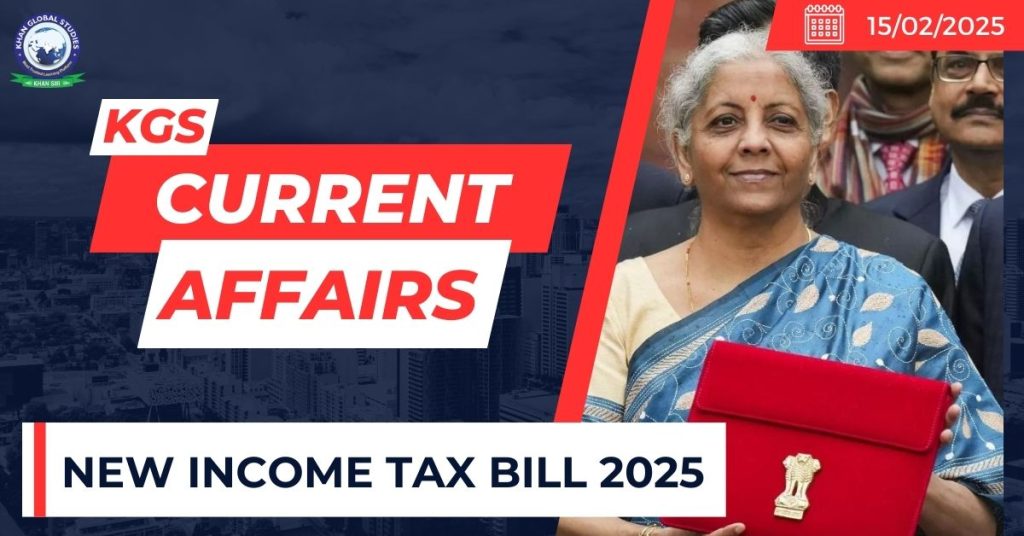Context:
The finance minister has introduced the Income Tax Bill 2025 in the Lok Sabha to replace the existing Income Tax Act, of 1961.
More on the News

- This Bill represents a significant step toward simplifying the language and structure of the Income-tax Act 1961.
- All amendments up to the Finance Bill 2025 have been properly included in the new Income Tax Bill 2025.
- It will be reviewed by a Parliamentary Committee, after which amendments may be considered, and a rollout date will be decided.
- Once passed by the parliament, the new law will likely come into effect on April 1, 2026.
Key Features of the Bill
Simplified and concise tax laws: The proposed bill aims to reduce the complexity of India’s current tax framework.
- This includes simplifying the language of the direct tax laws, deleting obsolete and redundant provisions, and reducing litigation.
- While the existing Income Tax Act of 1961, consists of 52 chapters spread across 1,647 pages, the new bill consolidates the content into 23 chapters with just 622 pages.
Tax slabs and rates as announced in Union Budget 2025 [New tax regime]: As per the bill, there are no changes to the income tax slabs and rates from those announced in the Budget 2025 for the fiscal year 2025-26.
- This move ensures continuity for taxpayers while simplifying the legislative framework.
- The bill also changes deductions and exemptions in investments, donations, and specific expenses.
Introduction of a unified ‘tax year’: A major structural change in the new bill is the introduction of a standardized ‘Tax Year,’ replacing the dual financial year (April to March) and assessment year system.
- This change is particularly beneficial for new businesses or professionals, as their tax year will commence from:
- The date they establish their business or profession, or
- The date they generate a new source of income.
Social media and virtual digital space: “Virtual digital space” is now defined to include email servers, social media accounts, online investment, trading and banking accounts, remote or cloud servers, and digital application platforms.
- These may be accessed during surveys, searches, and seizures.
Taxes for cryptocurrency: The newly proposed legislation has officially categorized Virtual Digital Assets (VDAs), including cryptocurrencies, NFTs (non-fungible tokens), and other digital assets, under the “assets” category.
- This classification puts VDAs in the same category as property, jewellery, paintings, drawings, and shares for taxation purposes.
- In Clauses 67 to 91, the new income tax bill introduces explicit provisions for virtual digital assets and updates beneficial tax rates.
Provisions for startups: The new bill, under Clauses 11 to 154, introduces new provisions to support startups, digital businesses, and renewable energy investments.
- Changes have also been made to capital gains tax.
- Under the previous law, Sections 45 to 55A categorized capital gains into short-term and long-term based on holding periods, with special tax rates for securities.
Disputes Resolution: The section on Dispute Resolution Panel (DRP) in the Bill provides the points of determination, decision, and the reasons behind it, marking a shift from the earlier section, which lacked clarity on the manner of issuing DRP directions.

